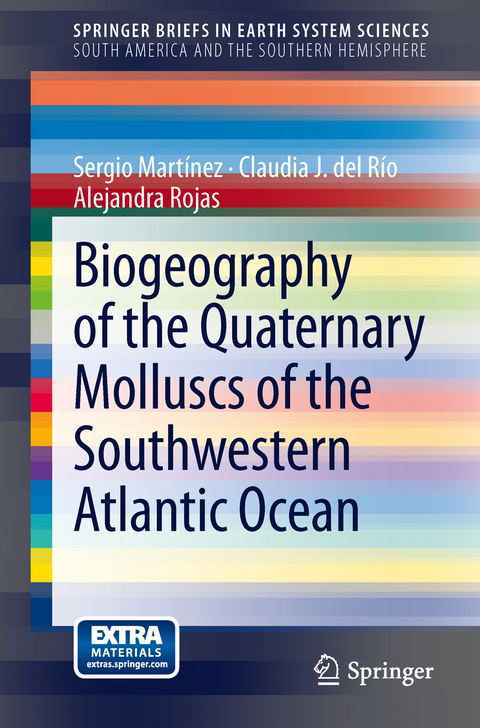
Biogeography of the Quaternary Molluscs of the Southwestern Atlantic Ocean
Springer (Verlag)
978-94-007-6054-7 (ISBN)
The Quaternary comprises a brief time in the Earth’s history, and apart from a few exceptions, molluscan assemblages recovered from exposures along the coast of Southwestern South America (Southern Brazil, Uruguay, Argentina) are essentially the same than those that inhabit the region today, leading to the assumption that no important change in the distribution of the faunas since Pleistocene times has occurred. However, the good taxonomic and temporal resolution reached in the last years, allowed us to detect some biogeographic changes, although traditional biogeographic units remain the same (i.e. Magellanic and Argentinean Provinces). These modifications involve mainly variations in the taxonomic composition of the assemblages and in the southern boundaries of some species distributions (extralimital species), today retracted northwards. These changes are related to southward shifts of the warm waters of the Brazilian Current, correlated with global warm peaks. This phenomenon was more intense in the Late Pleistocene (MIS 5e) and in the Holocene between ca. 6500-3500 14C yr.
Sergio Martínez obtained his bachelor's degree in Biological Sciences at the Universidad de la República, Montevideo, Argentina, where he is currently Professor of Paleontology. He obtained his PhD in Geological Sciences at the Universidad de Buenos Aires, Buenos Aires, Argentina. He also acts as a Researcher of the National Research System and Programme for the Development of Basic Sciences in Argentina. He has published numerous times in peer reviewed journals, and is a Member of the Editorial Board of the Revista Brasilera de Paleontologia and Comunicaciones de la Sociedad Malacológica del Uruguay. He has co-written books about the sedimentary basins of Uruguay, focusing on the geology, paleontology and their natural resources.
Introduction.-
Present oceanographic conditions.-
Present biogeographical units.-
Neogene roots.-
Quaternary mollusks.-
-Outline and Methods.-
-Previous studies.-
-Species distribution.-
Faunal boundaries during the Quaternary.-
Final remarks.
| Reihe/Serie | SpringerBriefs in Earth System Sciences |
|---|---|
| Zusatzinfo | 3 Illustrations, color; 13 Illustrations, black and white; IX, 36 p. 16 illus., 3 illus. in color. |
| Verlagsort | Dordrecht |
| Sprache | englisch |
| Maße | 155 x 235 mm |
| Themenwelt | Naturwissenschaften ► Biologie ► Ökologie / Naturschutz |
| Naturwissenschaften ► Biologie ► Zoologie | |
| Naturwissenschaften ► Geowissenschaften ► Mineralogie / Paläontologie | |
| Schlagworte | Argentina • biogeography • Extralimital species • Holocene • Pleistocene • Quaternary molluscs • Southern Brazil • Southwestern Atlantic • Uruguay |
| ISBN-10 | 94-007-6054-X / 940076054X |
| ISBN-13 | 978-94-007-6054-7 / 9789400760547 |
| Zustand | Neuware |
| Haben Sie eine Frage zum Produkt? |
aus dem Bereich


